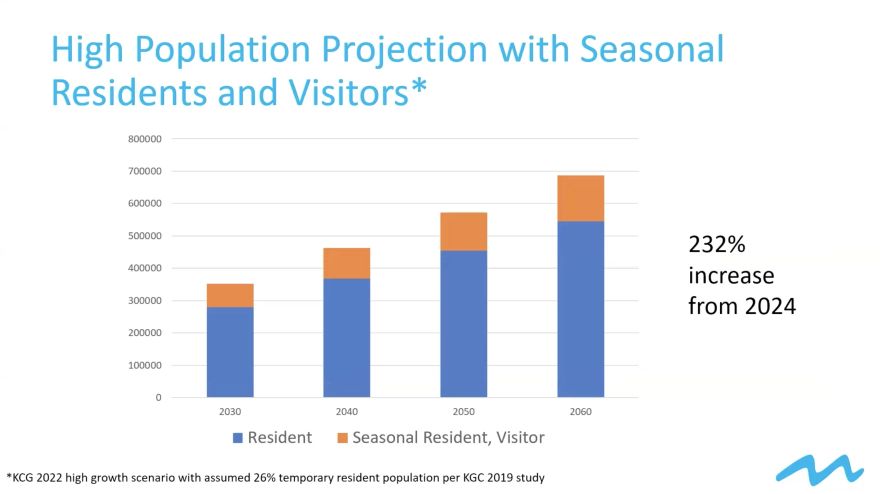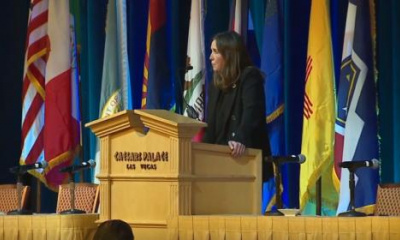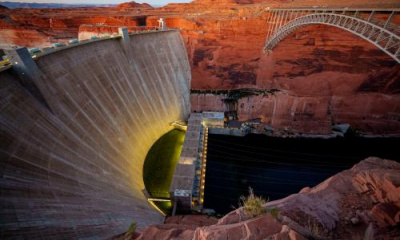It’s no secret that the expanding population in St. George is on a collision course with its limited water supply. But what about the tourists and snowbirds flocking there?
According to a 2019 estimate from the Kem C. Gardner Policy Institute, visitors and seasonal residents make up more than a quarter of the people in Washington County on a typical day during peak time, such as Labor Day weekend.
That’s an extra 57,069 people who aren’t counted in the county’s already exploding population, which is at just over 200,000. It means the county’s burden of providing water goes well beyond what a typical community that size would face.
“I have no control over growth at all. I don't promote it. I don't discourage it. I just simply respond to it. And our job is to be prepared,” said Washington County Water Conservancy District Manager Zach Renstrom.
There’s only so much the district can do to get its water conservation message across to people who are here temporarily, he said. But at least being able to factor in transient water users helps it know how much it needs to ramp up wastewater recycling and other efforts in its long-term plans.
“Sometimes we're asking them to change and sometimes we're realizing that we need to change.”
The analysis splits the 57,069 total fairly evenly between 28,103 tourists and 28,966 seasonal residents. The district believes it to be a conservative estimate that’s likely gone up since the report was released five years ago.
The district also expects the number to continue to grow as the resident population grows. Based on Kem C. Gardner projections, the combined number of permanent and temporary residents could be near 700,000 by 2060.

The question now is how much the county can get tourists and vacation home owners on board with the conservation plans it’s pushing for full-time residents.
In 2023, the district began imposing an extra fee on high water users — an extra $10 per 1,000 gallons once a customer has used more than 36,000 gallons in a month. Cities within the county have implemented their own tiered water rate systems, too.
It’s unclear how effective those fees are when they’re charged to a vacation home. Resntrom said district analysis has shown that seasonal residents use just 10% less total annual water than full-time residents, even though they may only be at the house half the year.
That shows how much lawn irrigation can impact water use, Renstrom said.
“They'll show up on a weekend … and they want that landscaping to look perfect. They want the grass to be perfectly green. … So what's happened is the landscapers will use excess water on that landscape because they don't want the phone call.”
Thanks to tax records, he said roughly 20% of the county’s homes are not the owners’ primary residences, so all that extra water use adds up. Having those additional users also skews the county’s per capita water use rates, which have attracted attention in recent years for being higher than other Southwest cities like Las Vegas and Tucson.
“We've gotten beat up a lot over [that]. But when you figure that … you have 50,000 people that you're not counting in that [population] number, it throws everything off a lot,” Renstrom said.
The Greater Zion Convention and Tourism Office estimates that between 8 and 10 million people visit Washington County each year, which is more per capita than Las Vegas’s home of Clark County, Nevada.
Zion National Park attracted more than 4.6 million visitors in 2023, its third-highest year ever and the third-highest among all national parks that year. Sand Hollow State Park near St. George has become the state’s most visited, with more than 1.4 million visitors in 2023.
So when it comes to decreasing tourism’s water impact, it’s important to get the message across in as many ways as possible, said Kelly Bricker, vice-chair of the Global Sustainable Tourism Council.
“A big part of it is on us as hosts to ensure that our guests are educated and knowledgeable about the considerations unique to a specific environment.”
Bricker is director of the Hainan University and Arizona State University Joint International Tourism College and emeritus professor of parks, recreation and tourism at the University of Utah.
Another thing that can help is spreading out those visitors rather than having them all come during peak time. Marketing that highlights the benefits of visiting during the off-season can encourage that, she said, as well as timed entry systems, like the permit requirements at Zion National Park’s Angels Landing.
At some point, however, the unending growth of tourism isn’t necessarily going to benefit residents who would be left to deal with the consequences of a water scarcity crisis. Washington County’s population growth in recent years has already tapped out its primary water source, the Virgin River.
“You don't want to jump in and then close the door behind you. But I think we have to start thinking more carefully about what our natural environments can withstand.”
Many rural communities with outdoor recreation attractions got a wake-up call about this during the pandemic, she said, when they saw how rapid tourism growth can strain their infrastructure and natural resources.
But she said when tourism drives the economy — it brought more than $1 billion to Washington County in 2022 — it can be difficult to strike a balance.
“Especially in areas that are short of basic requirements to live like water, you're going to have to consider what are limits to [tourism] growth and how do we manage that? That's a tough question for people to address, especially when they're directly benefiting from the economy of tourism.”









